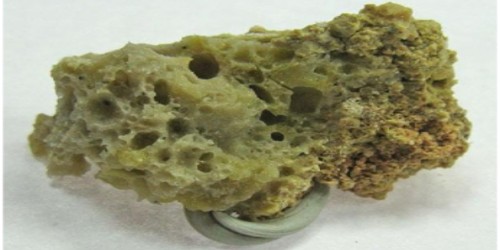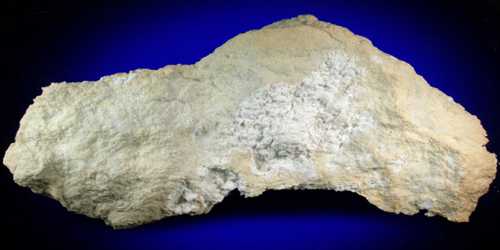Godovikovite is a rare sulfate mineral with the chemical formula: (NH4)Al(SO4)2. Aluminum can partially be substituted by iron. Hydration of godovikovite gives the ammonium alum, tschermigite. It was named after Aleksander Aleksandrovich Godovikov, former Russian mineralogist, and Director of the Fersman Mineralogical Museum in Moscow, Russia.
It was first described in 1988 for an occurrence in the Chelyabinsk coal basin, Chelyabinsk Oblast, Southern Urals, Russia, and named for Russian mineralogist Aleksandrovich Godovikov (1927–1995).
General information
- Formula: (NH4)Al(SO4)2
- Type material: Fe-bearing
- Hardness: 2
- Crystal System: Trigonal

Fig: Godovikovite – sulfate mineral
Properties
The mineral forms cryptocrystalline, often porous, masses, usually of white color. Single crystals are very small hexagonal blades. A typical environment for godovikovite are burning coal sites (mainly dumps). There the mineral acts, together with millosevichite, as one of the main components of so-called sulfate crust.
- Color: White, Colorless.
- Density: 2.53
- Diaphaneity: Transparent to Translucent
- Hardness: 2 – Gypsum
- Luster: Earthy (Dull)
- Streak: white
Occurrence: As reaction crusts around outlets releasing sulfuric acid from burning coal heaps.
Localities for Godovikovite including in Russia, and Tajikistan, as well as a few others. It occurs “as reaction crusts around outlets releasing sulfuric acid from burning coal heaps,” and is associated with anhydrous calcium and magnesium sulfates. Godovikovite is soluble in water.
Association: Unspecified anhydrous calcium and magnesium sulfates.
Information Source:
















